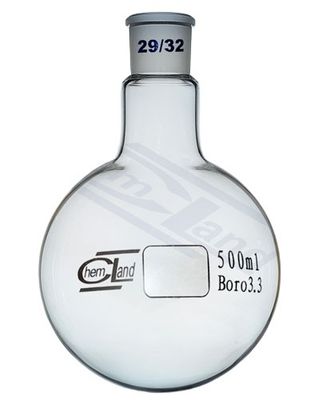Proteinase K - Lösung, 1 ml
Proteinase K (from Tritirachium album) is a non-specific protease of the serine protease family.
Proteinase K is used for the cleavage of proteins in nucleic acid preparations. It is mainly used in nucleic acid purification or for the removal of nucleases.
Proteinase K is active under a wide range of reaction conditions, including elevated temperatures and presence of SDS.
Activity: (Haemoglobin, pH 7.5; 25 °C) 30 mAnson-U/mg
Foreign activity: RNAse and DNAse not detectable
Optimum temperature: +65 °C.
Activity at +65 °C is ca. 12 x higher than at +25 °C. Over +65 °C, inactivation due to denaturation.
Activators: Denaturating agents like SDS (0,5-1 %), urea.
Inhibitors: Inhibition with Hg2+-ions, DFP, PMSF and phenol. Not inhibited by EDTA, sulfhydryl reagents and trypsin or chymotryps ininhibitors.
Stability: pH 4.0-12.5. pH optimum: 8,0.
Also stable even when denaturing agents, e.g. SDS and urea are present.
Stabilisers: Ca2+-ions (1-5 mM) prevent autolysis.
Proteinase K - Solution 20 mg/ml, sterile, ready-to-use, for biochemistry and molecular biology
Proteinase K (from Tritirachium album) is a non-specific protease of the serine protease family. Proteinase K is used for the cleavage of proteins in nucleic acid preparations. It is mainly used in nucleic acid purification or for the removal of nucleases.
- Sterile ready-to-use solution
- Stable over a wide pH range: 4.0–12.5
- Active at high temperatures and denaturing conditions
Enzyme: a neoclassical, Greek artificial word ενζυμου, énzymon, derived from εν-, en- (in-) and ζυμη, zýmé (yeast, sourdough, archaic)
Ferments: comes from the Latin fermentum (ferments, sourdough)
There are six classes in which all enzymes are classified according to the particular reaction they catalyse:
• Oxidoreductases (catalyse redox reactions)
• Transferases (transfer functional groups among substrates)
• Hydrolases (cleave bonds via addition of water)
• Lyases/Synthases (cleave or synthesise complex products out of basic substrates without cleavage of ATP)
• Isomerases (transform chemical isomers)
• Ligases/Synthetases (cleave or synthesise complex products out of basic substrates via cleavage of ATP)
Enzyme: a neoclassical, Greek artificial word ενζυμου, énzymon, derived from εν-, en- (in-) and ζυμη, zýmé (yeast, sourdough, archaic)
Ferments: comes from the Latin fermentum (ferments, sourdough)
There are six classes in which all enzymes are classified according to the particular reaction they catalyse:
• Oxidoreductases (catalyse redox reactions)
• Transferases (transfer functional groups among substrates)
• Hydrolases (cleave bonds via addition of water)
• Lyases/Synthases (cleave or synthesise complex products out of basic substrates without cleavage of ATP)
• Isomerases (transform chemical isomers)
• Ligases/Synthetases (cleave or synthesise complex products out of basic substrates via cleavage of ATP)
| Appearance | clear, colorless solution |
| Concentration | 20 mg/ml |
| Specific activity | ≥800 U/ml |
| Assay DNA | ≤200 pg/ml |
| Exonuclease activity | not detectable |
| Endonucleases | not detectable |







![2-Hydrazino-2-oxo-N-[3-(trifluoromethyl)phenyl]acetamide, 1g 2-Hydrazino-2-oxo-N-[3-(trifluoromethyl)phenyl]acetamide, 1g](https://d2j6dbq0eux0bg.cloudfront.net/images/88473019/4860101893.png)





